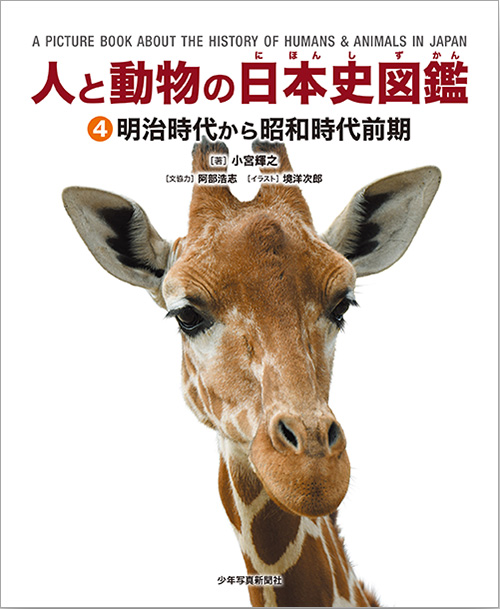Shonen Shashin shimbun-sha Bookmark
(4) MEIJI-JIDAI KARA SHOUWA-JIDAI ZENKI (from MEIJI era to the early SHOWA era)
Information will be available after you log in. Please create an account.
Rights Information
Other Special Conditions
Abstract
History is usually viewed from the perspective of humans, but if you look at it from the perspective of animals, you may be able to make some great historical discoveries.
Let us see the MEIJI era to the early SHOWA era from animals in the fourth volume of this series.
With the civilization and enlightenment in Japan, foreign cattle as cows, horses and chickens were introduced and breeding improvements with traditional native animals become popular.
And edible animals as pigs, sheep, goats, bullfrogs, crayfishes were introduced to Japan.
Production of silk and cultured pearls getting popular for earnings of foreign money under the Meiji-era government policy of fostering of industries and making the strengthening of military power.
Animals were also forced to fight in the battlefields as War dogs, war pigeons and fur of rats used for military uniforms.
You will see that the animals were getting involved into the flow of history, realize how interesting learning history is!
Recommended work for the 2020 Children and Family Affairs Agency (formerly Ministry of Health, Labor and Welfare) Child Welfare Culture Award. In the year REIWA-5NENDO(2023), the Child Welfare Cultural Award recommended work Awarded by Children and Families Agency (former Ministry of Health, Labor and Welfare).
This book sized 210mm(width) × 257mm (height).
Author’s Information
Former director of Ueno Zoo.
Born in Tokyo in 1947. After graduating from Meiji University's Faculty of Agriculture, he worked as a zookeeper at Tama Zoological Park in 1972. Since then, he had been primarily responsible for raising Japanese mammals and birds. Became a Chief zookeeper at Inokashira Natural and Cultural Gardens, a zookeeper at Tama Zoo, a zookeeper at Ueno Zoo, a director of Ueno Zoo from 2004 to 2011. He has served as a chairman of the Japan Association of Zoos and Aquariums and a vice-chairman of the Japan Association of Museums. Director of the Fukushima Marine Science Museum and councilor of the Yamashina Ornithological Research Institute. Part-time lecturer at Meiji University, Tokyo University of Agriculture, Utsunomiya University, and part-time lecturer at Yamanashi University.
His books include ``Creature Photo Gallery Series 1-4'' (Media Pal), ``Working at the Zoo'' (East Press), ``Illustrated Book of Animal Poop telling a lot about'' (Shogakukan Creative), and ``History of Japanese People and Animals 1.'' ~3” (Yumani Shobo), “ZOOtto Fun! Zoo” (Bunichi Sogo Publishing), “Whose Poop? ”, “Whose Handprints and Footprints” (Kaiseisha), “Japanese Livestock and Poultry”, and “The Real Sized Picture Book of Handprints and Footprints” (Gakken Plus), among many others.
| Series/Label | A picture book about the history of human & animals in Japan |
|---|---|
| Released Date | Feb 2022 |
| Price | ¥2,500 |
| Size | --- |
| Total Page Number | 48 pages |
| Color Page Number | 48 pages |
| ISBN | 9784879817464 |
| Genre | Children's Books > Study/Dictionary |
| Visualization experience | NO |





